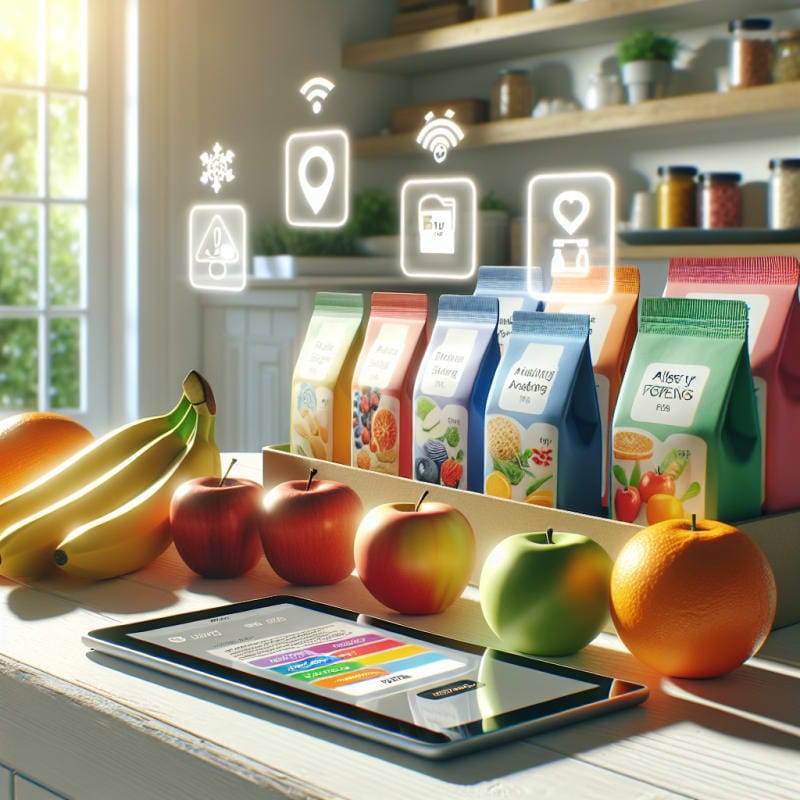“`html
How To Know If Food Contains Allergens? A Complete Guide for Safe Eating
By The Editors | Category: Generic Scanners | Updated June 2024
Every time we reach for a snack or sit down at a restaurant, we make decisions that affect our health. For millions worldwide, the question isn’t just about taste or nutrition—it’s about safety: How to know if food contains allergens? As food supply chains grow more complex, and ingredient lists become longer, understanding what’s in your food has never been more crucial. Whether you have food allergies, care for someone who does, or simply want to make informed choices, this guide offers the latest science, practical advice, and digital tools to help you navigate the world of food allergens.
Why Food Allergens Matter: The Rising Public Health Challenge
Food allergies affect an estimated 32 million Americans, including 1 in 13 children, according to the U.S. Food and Drug Administration (FDA). In Europe, the European Food Safety Authority (EFSA) reports similar trends, with allergies rising steadily over the past decade.1 Reactions can range from mild discomfort to life-threatening anaphylaxis. For those affected, even trace amounts of allergens can trigger severe responses.
- Hidden ingredients in processed foods
- Cross-contamination during manufacturing or preparation
- Ambiguous labeling or language barriers
These factors make identifying allergens a genuine challenge—one that impacts not just individuals with allergies, but families, schools, restaurants, and the broader community.
What Are the Most Common Food Allergens?
The FDA identifies nine major food allergens that account for the vast majority of allergic reactions in the United States:2
| Allergen | Examples of Foods |
|---|---|
| Milk | Cheese, yogurt, butter, baked goods |
| Eggs | Pasta, mayonnaise, cakes |
| Fish | Tuna, salmon, anchovies |
| Crustacean shellfish | Shrimp, crab, lobster |
| Tree nuts | Almonds, walnuts, cashews |
| Peanuts | Peanut butter, sauces, snacks |
| Wheat | Bread, pasta, cereals |
| Soybeans | Tofu, soy sauce, processed foods |
| Sesame | Hummus, bagels, tahini |
In other regions, additional allergens—such as celery, mustard, and lupin—are also considered major risks.3
How to Know If Food Contains Allergens? Key Strategies
Identifying allergens in food requires a multi-layered approach. Here are the most effective ways to protect yourself and your loved ones:
1. Read Ingredient Labels Thoroughly
- Look for allergen statements: U.S. law requires that the nine major allergens be listed in plain language, either in the ingredient list or in a “Contains” statement.
- Beware of “may contain” warnings: These indicate possible cross-contact during manufacturing.
- Check for unfamiliar ingredients: Some allergens hide behind technical names (e.g., “casein” for milk, “albumin” for egg).
Pro tip: Ingredient lists can change without notice. Always check the label—even on familiar products.
2. Use Smart Tools Like Food Scan Genius
Digital apps are transforming the way we shop. Food Scan Genius lets you scan barcodes or ingredient lists with your smartphone, instantly flagging allergens, additives, and even dietary preferences. The app’s AI-driven database is updated daily, helping users avoid hidden risks and find safe alternatives. Try Food Scan Genius for free.
“As a parent of a child with severe peanut and milk allergies, Food Scan Genius has been a lifesaver. I can scan any snack at the store and get instant peace of mind. I recommend it to every allergy family I know!”
— Jessica L., Boston, MA
3. Ask Questions When Eating Out
- Communicate clearly: Tell servers about your allergies and ask how dishes are prepared.
- Request ingredient lists: Many restaurants now provide allergen menus or can check with the chef.
- Watch for cross-contact: Even if a dish doesn’t contain your allergen, shared equipment can pose risks.
According to a recent New York Times report, more restaurants are adopting transparent allergen labeling, but standards still vary widely.
4. Stay Informed About Food Recalls
Food recalls due to undeclared allergens are on the rise. Subscribe to alerts from the FDA or Food Standards Agency to stay updated.
5. Be Cautious with Imported and Unpackaged Foods
- Imported foods: Allergen labeling laws differ by country. When in doubt, contact the manufacturer.
- Bulk bins & bakeries: Risk of cross-contact is higher. Ask staff about cleaning practices and ingredient sources.
Decoding Food Labels: What to Watch For
Food labels are your first line of defense, but they can be confusing. Here’s how to interpret them:
- “Contains [allergen]” — The product includes the allergen as an ingredient.
- “May contain [allergen]” — There’s a risk of cross-contact.
- “Manufactured in a facility that processes [allergen]” — Cross-contact possible, but not guaranteed.
- Technical or Latin names — e.g., “casein” (milk), “lecithin” (soy), “albumin” (egg).
For a full list of ingredient names to watch for, see the Food Allergy Research & Education (FARE) guide.
How Food Scan Genius Makes Allergen Detection Easier
In a world of complex ingredients and fast-paced shopping, Food Scan Genius empowers consumers to make safer choices. Here’s how:
- Barcode scanning: Instantly checks products against your allergy profile.
- Ingredient analysis: AI highlights hidden allergens and risky additives.
- Personalized alerts: Set preferences for allergens, dietary restrictions, or even religious guidelines.
- Global database: Covers U.S., EU, and Asian products, with daily updates.
Download Food Scan Genius and take control of your food safety—at home, at school, or on the go.
Frequently Asked Questions: How to Know If Food Contains Allergens?
What should I do if I suspect a product contains undeclared allergens?
Stop consuming the product immediately. Contact the manufacturer and report the issue to your country’s food safety authority. Save packaging for reference.
Are “may contain” warnings legally required?
In the U.S., “may contain” statements are voluntary, but highly recommended. In the EU, similar precautionary labels are common but not mandatory.4
How can I protect my child with food allergies at school?
- Work with school staff to create an allergy action plan.
- Teach your child to read labels and avoid food sharing.
- Consider using tools like Food Scan Genius for field trips or cafeteria meals.
Is it safe to eat at restaurants with food allergies?
Many restaurants are allergy-aware, but risks remain. Always communicate your needs, ask about preparation, and carry emergency medication.5
The Bigger Picture: Why Allergen Awareness Matters for Everyone
Even if you don’t have allergies, understanding food ingredients is vital. Allergens can affect anyone—friends, family, coworkers, or classmates. Increased transparency in labeling and the rise of digital scanning tools benefit everyone, from people with celiac disease to those with religious dietary needs.
Recent news coverage, such as CNN’s feature on food allergy technology, highlights how digital innovation is making food safer for all. As our diets grow more global and processed, vigilance and smart tools are essential.
Conclusion: Empower Your Food Choices
Knowing how to know if food contains allergens is no longer just a matter of reading labels—it’s about leveraging science, technology, and community awareness. Whether you use advanced apps like Food Scan Genius, keep up with food safety news, or simply ask more questions at the store, you’re taking steps to protect yourself and those you care about.
Informed choices save lives. As we move toward a future of smarter food labeling and AI-powered assistance, everyone can eat with greater confidence—no matter their dietary needs.
“`





